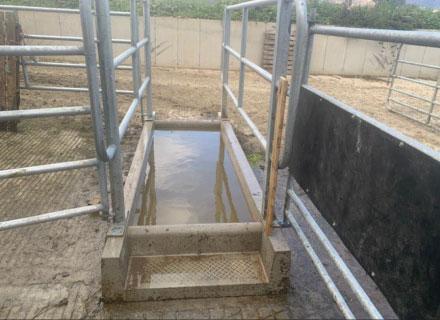Lameness on the Dairy Farm- Autumn is Peak Risk Period
Lameness on the Dairy Farm- Autumn is Peak Risk Period 20 September 2024 Type Media Article By Tom Murphy, B& T Dairy Adviser, Teagasc, Galway/Clare One of the hidden costs when it comes to milking cows is lameness, and it is often a repeat offender. It can also take up a lot of valuable time […]
By By Tom Murphy, B& T Dairy Adviser, Teagasc, Galway/Clare
Lameness on the Dairy Farm- Autumn is Peak Risk Period
Type Media Article
By Tom Murphy, B& T Dairy Adviser, Teagasc, Galway/Clare
One of the hidden costs when it comes to milking cows is lameness, and it is often a repeat offender. It can also take up a lot of valuable time if the cow has to be kept in a separate paddock or increases the length of time it takes to get the cows to and from the milking parlour.
The cost of dairy cow lameness could be up to €300 per single incident, not to mention reduced animal welfare and the hassle factor of lame cows. However, on an ongoing herd basis recent detailed research suggests that lameness on Irish Dairy farms costs per annum in the region of €5,000 per 100 cow herd, at a prevalence of 5%. This cost is estimated to double at a prevalence of 10% and treble when in the region of 20%.
Work carried out by Teagasc-Moorepark Researchers established that lameness is in the region of 9% on Irish Dairy herds and is highest in in autumn, but with a large range across herds. Cows with problems in the spring were 10 times more likely to re-appear as lame in the autumn. Lameness causes for a grazing herd tend to be mechanical (bruising, white line disease, ulcers), rather than infectious (Mortellaro, foul in the foot, other infections). The Dairy farmer can prevent a lot of this by attention to detail of walking surfaces and managing cow flow around milking times. This is a good time to review the issues on the farm as we move into the autumn, which is the highest risk time of year.
The following Key areas concerning prevention should be prioritised:
- Specific problem areas
- Problem road surfaces
- Interface areas
- Roadway verges
- Cow flow
- Hoof trimming
- Footbathing
Small problem areas like standing water, poorly drained corners, broken surfaces, shading by overgrown trees, etc., can cause major lameness problems. Identify and fix these as a first step.
Are they in good enough condition? Small pebbles and grit are the main cause of white line disease. If this is observed at hoof trimming, then there is an issue to be fixed. Surfaces should be smooth and finished with a well-compacted surface material. Take an hour or two to walk farm roads and note the quality of the surface, getting a second opinion if possible.
The step from roadway to concrete can often be a cause of lameness due to pebbles being dragged onto the hard surface. Laying 8-10m of a material like astro-turf at yard or tunnel entries/exits has worked very well for many farms.
A common problem is build-up of grass/sods along the road over time, which impedes drainage. Remove these or at least break regular openings to provide drainage.
Cow Flow in and out of the parlour – are there simple modifications that could be made, e.g., remove sharp turns, provide matting on narrow parlour exits? Check the size of the collecting yard – providing more than 1.5 m2 per cow reduces stress on cows’ feet.
Lameness is a repeat offender problem. All cows that were treated during spring or have a previous history should be drafted for selective trimming by early autumn. Check all cows for rear hoof condition at milking – trim overgrown digits before clinical lameness emerges.

Precast concrete footbath measuring 850 mm x 3 m – works well for herds of up to 250 cows.
Foot Bath for infectious disease control where identified. Follow a clear protocol for product use and schedule of treatments. Poorly done foot-bathing is worse than no foot-bathing at all. Record all clinical cases and causes so that ongoing problems can be identified.
Now is a good time to act on any adjustments that need to be made while weather conditions are reasonably good and as we enter the high risk period – when cows are heavier in-calf and ground conditions become soft.
Date for the Diary:
‘Getting Winter Ready’ Teagasc Beef Farm Walk on the farm of Aonghusa Fahy, Tullira, Ardrahan, H91 TPD2 on Friday, 27th September at 3.00pm.
